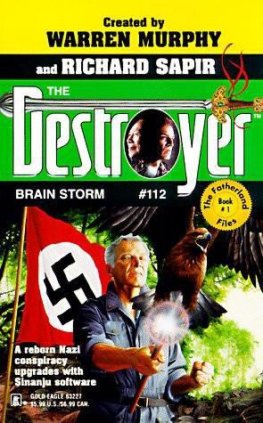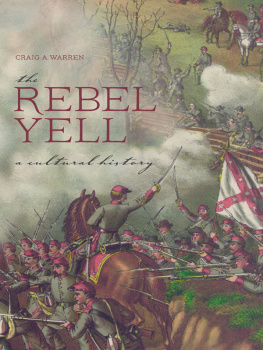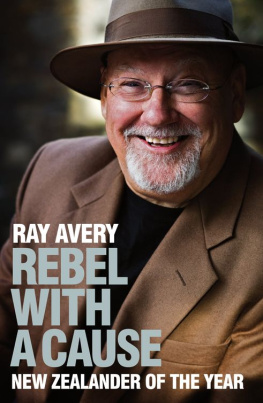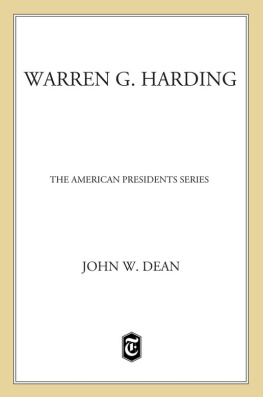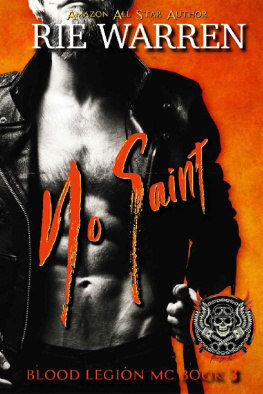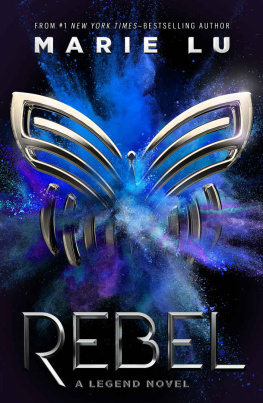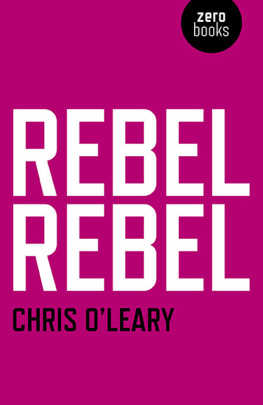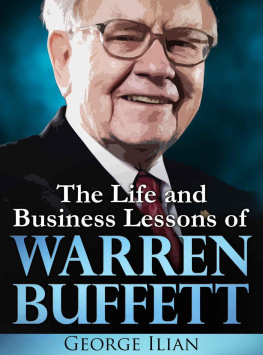Warren Getler - Rebel Gold
Here you can read online Warren Getler - Rebel Gold full text of the book (entire story) in english for free. Download pdf and epub, get meaning, cover and reviews about this ebook. publisher: Simon & Schuster Paperbacks, genre: Detective and thriller. Description of the work, (preface) as well as reviews are available. Best literature library LitArk.com created for fans of good reading and offers a wide selection of genres:
Romance novel
Science fiction
Adventure
Detective
Science
History
Home and family
Prose
Art
Politics
Computer
Non-fiction
Religion
Business
Children
Humor
Choose a favorite category and find really read worthwhile books. Enjoy immersion in the world of imagination, feel the emotions of the characters or learn something new for yourself, make an fascinating discovery.
- Book:Rebel Gold
- Author:
- Publisher:Simon & Schuster Paperbacks
- Genre:
- Rating:4 / 5
- Favourites:Add to favourites
- Your mark:
- 80
- 1
- 2
- 3
- 4
- 5
Rebel Gold: summary, description and annotation
We offer to read an annotation, description, summary or preface (depends on what the author of the book "Rebel Gold" wrote himself). If you haven't found the necessary information about the book — write in the comments, we will try to find it.
Rebel Gold — read online for free the complete book (whole text) full work
Below is the text of the book, divided by pages. System saving the place of the last page read, allows you to conveniently read the book "Rebel Gold" online for free, without having to search again every time where you left off. Put a bookmark, and you can go to the page where you finished reading at any time.
Font size:
Interval:
Bookmark:
W ED like to thank the many sources of information and intellectual inspiration who made this book possible, experts from a multitude of professionshistory, cartography, cryptography, genealogy, theology, geophysics, geology, mathematics, numismatics and treasure-hunting. They are too numerous to mention in full. The same must be said of the authors of relevant books and manuscripts, stretching back to the mid-1850s, who revealed disparate pieces of the puzzle. Their thought-provoking markers served as guideposts as we made our way through the encrypted trail left behind by the secretive Knights of the Golden Circle.
We owe much gratitude to our editor, Bob Bender, for grasping the size and scope of the enigma surrounding the KGC and its hidden gold. Bobs enthusiasm for the subjectand its implications for historical discourseinspired us throughout the writing. It was with the help of Bobs long experience that we were able to strike a fair and, we hope, engaging balance between historical analysis and adventure tale. Thanks to his assistant, Johanna Li, for helping us marshal the various visual components of the book.
We are also highly appreciative of the support from our literary agents, Matt Bialer and Robert Gottlieb of Trident Media, who stood behind this complex and provocative project at an early stage. Matts sage advice at the proposal phase kept us rightly focused as wean unlikely duohit the New York publishing circuit.
Others who provided helpful comments and suggestions throughout include: Michael Getler, Bob Whitcomb, Ayfer Jafri, John Buffalo, Betsy Stahl and Cari-Esta Albert.
Those providing much appreciated assistance in our research of primary and secondary sources include: Dave Kelly of the Library of Congresss main reading room, James Flatness, of the geography and maps division, and John Sellers and his colleagues in the manuscripts division; Nick Sheets, of the special collections division at Georgetown Universitys Lauinger Memorial Library; Fain McDaniel, Commanche County Museum in Commanche, Texas; Ana Lash, Hayden Public Library, Hayden, Arizona; and Paul and Joan Tainter, Freemont, Nebraska.
Among those who contributed directly to the telling of the KGC story in Arkansas, providing invaluable help through personal insights, photos, memorabilia, documents and other pages from the past: Bob and Wanda Tilley, lifelong friends and neighbors of Bob and Linda Brewer; Don Fretz, a treasure hunter and lifelong friend of Bobs; Don and Jeff Ashcraft, grandson and great-grandson of W. D. Ashcraft; Bud Ashcraft, nephew of W. D. Ashcraft; Dave and Jack Brewer, Bobs brothers; and local history buff Mitchell Cogburn.
Also deserving thanks and credit for their insight into the KGC: John London, a KGC researcher and treasure hunter from Texas; Bud Hard-castle, a respected KGC authority and Jesse James researcher from Oklahoma; Stan Vickery, a KGC researcher and treasure hunter from Louisiana; Richard Scott from Texas, who provided valued assistance in field research; sisters Jo Anne and Ceci Gillespie, of Oklahoma, on whose property much KGC history is in evidence and for whose diligent research and warm hospitality we are especially grateful; Steve Wilson, author of Oklahoma Treasures and Treasure Tales ; and, for his unquestionable knowledge about the KGCs money trail, Michael Griffith, a junior-high school history teacher from Oklahoma.
In Arizona wed like to thank a handful of people for their wisdom, documents and other invaluable information: Ellie Gardner, president, Heart Mountain Project, Apache Junction; Brian MacLeod, vice-president, Heart Mountain Project; and Bob Schoose, owner, Goldfields Ghost Town, Apache Junction.
And ample credit is due those who have helped Bob with his Ouachita Treasure Consulting Golden Circle Research in other parts of the country, uncovering signs of KGC buried treasure from coast to coast.
Credit is also due genealogists Barbara Fulton and Barbara Lucas.
We thank DeLorme, www.delorme.com , for its cooperation and assistance, particularly topographical maps generated by TOPO USA Ver. 3.0, 4.0, copyright DeLorme, Yarmouth, Maine. TOPO USA software has greatly simplified our treasure-hunting map work.
Wed like to acknowledge Dr. Alan Witten, professor of geophysics at the University of Oklahoma; as well as Dan Woods, geophysicist with Digital Magnetotelluric Technologies, and independent geological consultant Jim Rose for their scientific insights into magnetometry.
Finally, a word of appreciation must go to those universities that have provided a wonderful service in digitizing centuries-old magazines, journals and books and then making those documents available via the Making of America series on the Internet. This service, funded by the Andrew W. Mellon Foundation, has enabled researchers like us to dig for obscure yet vitally important nineteenth-century references, such as those for the Knights of the Golden Circle, by using keyword searches. Without this keystroke ability, some of the source material uncovered in this bookand the relationship of that information to what was generally known to be in the public domainmight never have surfaced.
Photograph credits: : Bob Brewer
Map credits: : Bob Brewer
THE effigy twisted on a thin steel wire.
When Bob Brewer brought his Jeep to a full stop, he could see that the headless figure hung precisely over the spot where he had walked the day before. It was dressed in blue jeans and a sweatshirt. And it was riddled with bullet holes. The dummys torso was stuffed with rocks, and it slumped forward in a deadweight slouchnearly snapping the sapling from which it dangled. There were other ominous changes to the landscape, as well. Tree trunks surrounding the spot had been spray-painted with inverted crosses. A stack of spent rifle shell cases, piled on the boxes that had held them, lay nearby. A trail of yarn, tied to the back of the effigy, led to the pile of used ammunition in case anyone missed the connection.
Twenty-four hours earlier, on a crisp October morning in 1993, Bob and a friend had arrived at the remote site along a dirt trail in Arkansass Ouachita Mountains. They had brought along an old topographical map of the region, a metal detector and a camera for the purpose at hand: to find and record clues leading to what Bob suspected were buried caches of treasure. It was not a farfetched suspicion. The experienced treasure sleuth had previously unearthed caches of Civil Warera gold and silver coins not far from the site, and he had reason to believe that this area was linked to those sites. Over the course of that first day, the two men had discovered and photographed numerous buried clues: rusted plow points and other pieces of metal that served as geographic pointers. The location of the buried directional markers had been carefully recorded on a grid to ensure the correct orientation of each piece, which was then reburied. It was a system that had yielded results in the past and which Bob was steadily improving. As Bob and his friend had headed back to camp that night, he felt sure that he was close to finding something big.
When the men returned the next day with a third treasure-hunting friend, they quickly realized that their plans would have to change. As Bob looked on, he wondered about the decision hed made to pursue a decades-old mystery deep in the Arkansas timberlands.
THE backwoods that surround Hatfield, Arkansas, are thick, nearly opaque in places, and vast. Towering pines and hardwoods crowd steep mountain slopes, their canopies eclipsing much of the suns rays. On the north-facing ridges, where the giant hardwoods cluster, only the rare splash of sunlight reaches the damp forest soil. This shadowed environment, spiked with its treacherous crags, can seem uninvitingeven menacingfor those who come from beyond the rugged hill country of west-central Arkansas. But for those native to the hills, the natural shroud helps keep things private, elemental, protected.
Font size:
Interval:
Bookmark:
Similar books «Rebel Gold»
Look at similar books to Rebel Gold. We have selected literature similar in name and meaning in the hope of providing readers with more options to find new, interesting, not yet read works.
Discussion, reviews of the book Rebel Gold and just readers' own opinions. Leave your comments, write what you think about the work, its meaning or the main characters. Specify what exactly you liked and what you didn't like, and why you think so.


